Kayaking vs Canoeing vs Rafting: Best Water Sport
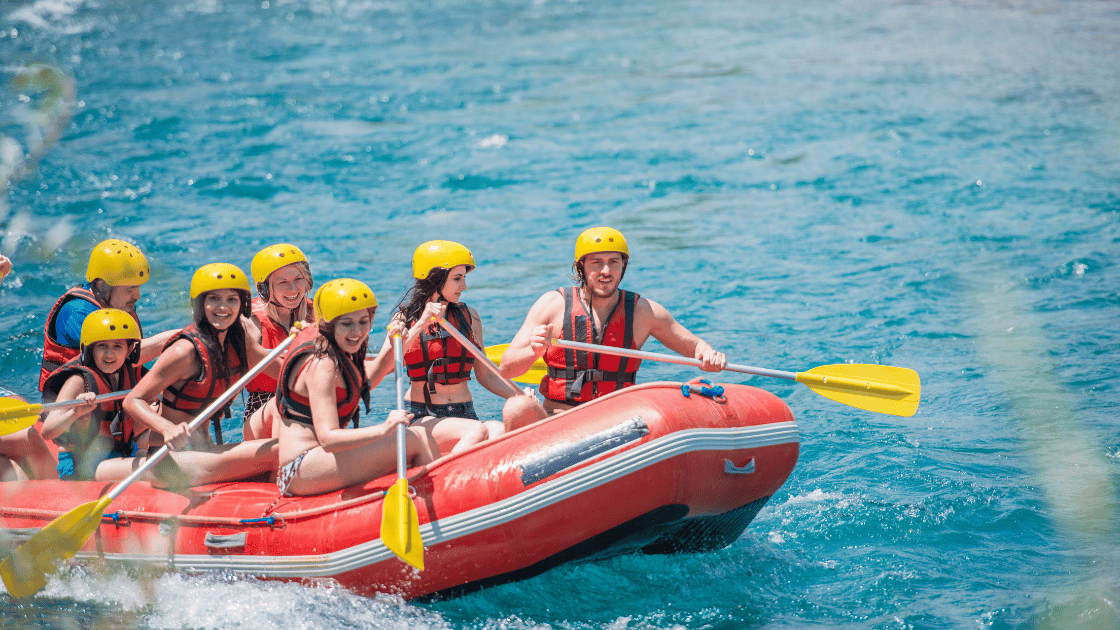
Kayaking, canoeing, and rafting are popular water sports that offer unique experiences and physical challenges. Each activity provides a distinct way to explore nature, exercise, and unwind from the daily grind. In this article, we will delve into the world of kayaking, canoeing, and rafting to compare their characteristics and help you determine which one best suits your interests and fitness goals.
Purpose of this article
The purpose of this article is to provide an in-depth comparison of these three water sports. By examining their unique features, skill requirements, and overall experiences, we aim to help you make an informed decision about which activity aligns with your preferences.
Why it’s important to choose the right water sport
Whether you are seeking an adrenaline-pumping adventure or a serene paddling excursion, understanding the differences between kayaking, canoeing, and rafting will enable you to choose the water sport that resonates with your desires. Let’s explore the exciting realm of these water activities and discover which one can become your new favorite calorie-burning hobby.
1. Kayaking
1.1 Recreational Kayaking
Recreational kayaking is a delightful water activity that allows you to immerse yourself in the tranquility of calm waters while exploring natural settings. This form of kayaking is ideal for individuals seeking leisurely experiences and a chance to connect with nature. Whether it’s gliding along a serene lake or gently paddling down a meandering river, recreational kayaking offers a serene escape from the hustle and bustle of everyday life.
Enjoy the Benefits of Recreational Kayaking
In recreational kayaking, you can revel in the following aspects:
- Leisure and Relaxation: It provides an excellent opportunity to unwind and appreciate the beauty of your surroundings at a leisurely pace.
- Exploration: You can venture into picturesque waterways, discovering hidden coves, and observing local wildlife in their natural habitats.
- Social Bonding: It’s also an activity that can be enjoyed with friends or family members, fostering connections and creating cherished memories together.
Accessible and Beginner-Friendly
This type of kayaking is accessible to beginners and doesn’t require extensive training or specialized skills, making it an appealing choice for those new to water sports. Additionally, recreational kayaks are designed to offer stability and ease of maneuvering, contributing to a more relaxed paddling experience.
Overall, recreational kayaking serves as an excellent entry point into the world of water sports, offering a perfect blend of tranquility, exploration, and outdoor enjoyment.
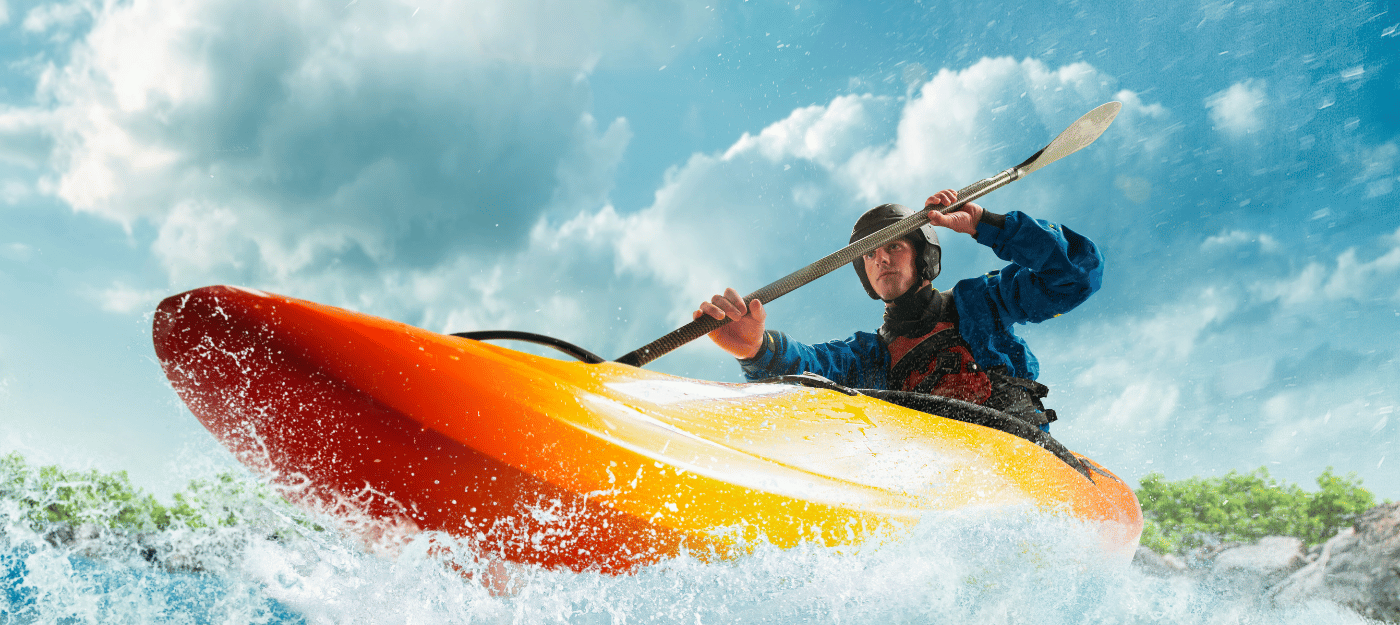
Sea/Ocean Kayaking
Kayaking is a versatile water sport that offers various experiences depending on the type of activity chosen. One such activity is sea/ocean kayaking, which involves coastal adventures and the opportunity to encounter marine life.
What is Sea/Ocean Kayaking?
Sea/ocean kayaking is a type of kayaking that takes place in open waters, such as the sea or ocean. Unlike other forms of kayaking that are done in rivers or lakes, sea/ocean kayaking offers a unique set of experiences:
- Exploring Coastal Beauty: The experience of sea/ocean kayaking is characterized by the serene beauty of coastlines and the chance to explore hidden coves and caves.
- Encountering Marine Life: Paddling through crystal-clear waters, you may have the privilege of observing marine animals such as dolphins, seals, and seabirds in their natural habitat.
- Accessing Remote Locations: This type of kayaking also provides access to remote beaches and islands that are often inaccessible by larger boats or on foot, offering a sense of seclusion and tranquility.
By highlighting these unique aspects, enthusiasts can better understand the distinct thrills and rewards associated with sea/ocean kayaking.
1.3 White Water Kayaking
White water kayaking is an exhilarating and adrenaline-pumping form of kayaking that takes place on fast-flowing rivers and challenging rapids. It is the perfect choice for thrill-seekers who crave excitement and adventure on the water. With its unique set of challenges and rewards, white water kayaking offers a truly unforgettable experience.
How Does White Water Kayaking Work?
- White water kayakers navigate through turbulent waters, using their skills and agility to maneuver through powerful currents and overcome obstacles along the way.
- It requires a combination of strength, technique, and quick thinking to successfully tackle the rapids.
- The rush of adrenaline as you conquer each rapid is unmatched, making white water kayaking an incredibly rewarding and addictive sport.
What Makes White Water Kayaking Exciting?
- White water kayaking offers a thrilling sense of freedom and connection with nature.
- As you paddle downstream, you can feel the power of the river beneath you, immersing yourself in the sights and sounds of the surrounding wilderness.
- The challenge of navigating through swirling eddies, crashing waves, and steep drops adds an element of excitement that can’t be replicated in any other water sport.

What Are the Benefits of White Water Kayaking?
- While white water kayaking can be physically demanding, it also provides a great workout for your upper body, core muscles, and cardiovascular system.
- The constant paddling and maneuvering required to navigate through rapids engage multiple muscle groups, helping to improve strength, endurance, and overall fitness.
- In addition to the thrill and physical benefits, white water kayaking also allows you to explore stunning natural landscapes that are otherwise inaccessible.
- From majestic canyons to remote mountainous regions, white water kayaking takes you off the beaten path and into some of the most breathtaking environments on Earth.
How to Stay Safe While White Water Kayaking?
- White water kayaking is not without its risks, and it is essential to have the proper skills, knowledge, and safety equipment before venturing into fast-flowing rivers.
- Taking lessons from experienced instructors and gradually progressing through different levels of difficulty is crucial for a safe and enjoyable white water kayaking experience.
White water kayaking offers an adrenaline-fueled adventure that combines the thrill of conquering rapids with the beauty of nature. It is a challenging yet rewarding water sport that pushes your limits and allows you to experience the untamed power of rushing rivers firsthand. So, if you’re seeking an unforgettable adventure on the water, white water kayaking might be the perfect choice for you.
1.4 Kayak Fishing
Kayak fishing is a special combination of fishing and paddling, which offers several advantages over traditional fishing methods. Here are the main points to consider:
Stealth and Access
- Kayaks provide access to remote fishing spots that are inaccessible by larger boats, allowing anglers to explore shallow waters and reach areas with minimal disturbance.
- The quiet nature of kayaks enables fishermen to approach fish quietly, increasing the likelihood of successful catches.
Maneuverability
- The nimble maneuvering capabilities of kayaks allow anglers to navigate through narrow waterways, including marshes, coves, and mangroves, where motorized boats cannot go.
- This flexibility enhances the overall fishing experience by enabling anglers to explore diverse environments and adapt to changing conditions.
Physical Activity
- Engaging in kayak fishing combines the physical benefits of paddling with the recreational enjoyment of fishing.
- It offers a full-body workout as anglers use their upper body strength for paddling while incorporating core stability and balance techniques essential for successful angling.
Connection with Nature
- Kayak fishing provides an immersive experience in nature, allowing anglers to feel more connected to their surroundings.
- With no loud engine noises or excessive technological distractions, kayak fishermen can appreciate the peaceful serenity of the water environment while honing their fishing skills.
The unique features of kayak fishing make it a popular choice for outdoor enthusiasts seeking a harmonious blend of adventure, relaxation, and angling satisfaction.
2. Canoeing
Canoeing is another popular water sport that offers a unique and enjoyable experience on the water. It involves paddling in open canoes, which are narrow boats that can accommodate at least two people. Canoeing utilizes single-bladed paddles and often requires paddlers to kneel in the boat for better stability and control.
2.1 Recreational Canoeing
Recreational canoeing is a fantastic way to relax and unwind while enjoying the beauty of nature. It is characterized by its laid-back and leisurely nature, making it an excellent choice for those seeking a more tranquil water sport experience. Here are some key points about recreational canoeing:
Leisurely Paddling
Recreational canoeing focuses on gentle paddling in calm waters such as lakes, ponds, or slow-moving rivers. The pace is typically slower compared to other water sports, allowing you to take in the scenery and enjoy a peaceful outing.
Exploration
Canoes are versatile vessels that allow you to explore different bodies of water, including hidden coves, secluded bays, and winding streams. You have the freedom to navigate through narrower channels and access areas that may be inaccessible to larger watercraft.
Family-Friendly
Recreational canoeing is an activity that can be enjoyed by people of all ages, making it a wonderful option for families. It provides an opportunity for bonding and creating lasting memories as you paddle together and explore the great outdoors.
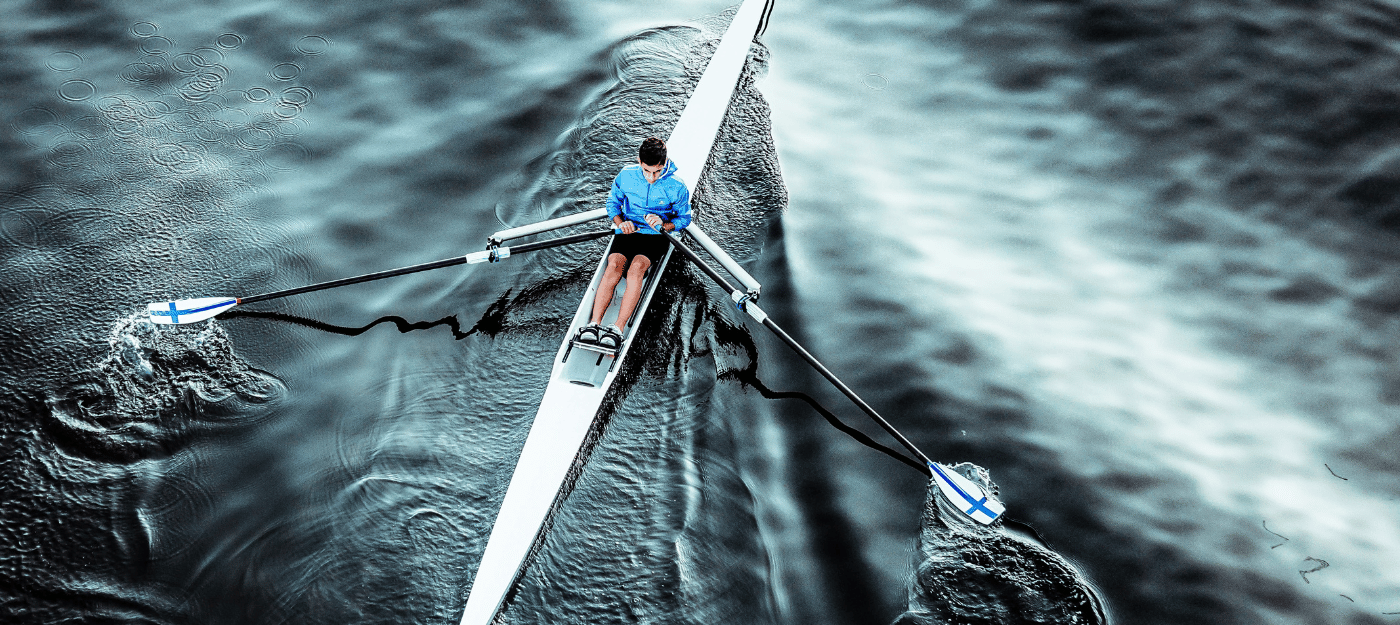
Exercise and Relaxation
Canoeing offers a low-impact workout as you engage your core muscles while paddling. It’s a great way to stay active while enjoying the tranquility of being out on the water. The rhythmic motion of paddling can also be meditative, providing relaxation and stress relief.
Gear and Equipment
To enjoy recreational canoeing, you will need:
- A canoe
- Paddles
- Personal flotation devices (life jackets) for safety
Canoes come in different sizes and materials, offering various options to suit your needs and preferences. It’s essential to choose the right equipment that matches your skill level and the type of water you’ll be paddling on.
Recreational canoeing is an excellent choice for those who prefer a more relaxed and serene water sport experience. Whether you’re paddling on a calm lake or meandering down a peaceful river, this activity allows you to connect with nature and enjoy the tranquility of the water.
2.2 Expedition Canoeing
Canoeing is a traditional yet still popular water activity that offers a different experience from kayaking and rafting. While recreational canoeing focuses on the relaxed nature of paddling in open canoes, expedition canoeing takes it to the next level by offering an adventurous aspect and the potential for long-distance journeys.
What is Expedition Canoeing?
Expedition canoeing involves embarking on multi-day trips, exploring rivers, lakes, and even remote wilderness areas. It allows you to immerse yourself in nature and experience the thrill of self-sufficiency as you navigate through various terrains.
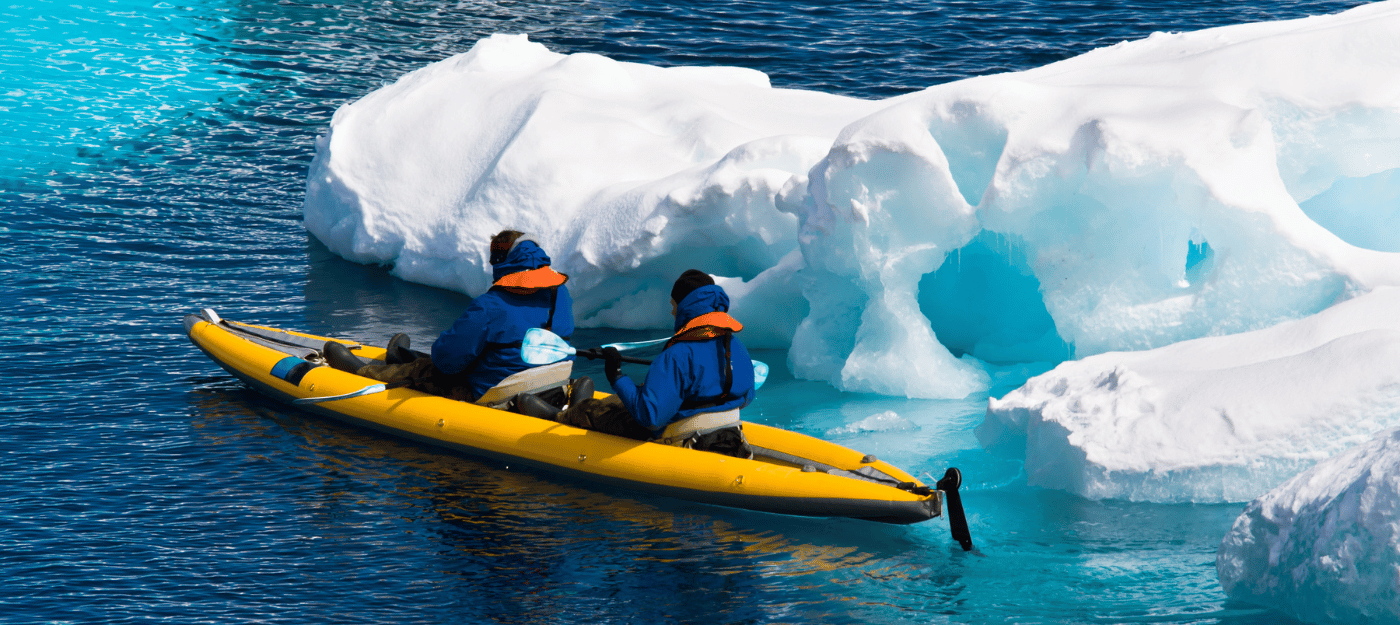
Key Points about Expedition Canoeing
Here are some key points about expedition canoeing:
- Adventure and Exploration: Expedition canoeing provides an opportunity to venture into uncharted territories and discover hidden gems that are inaccessible by other means.
- Explore untouched natural landscapes
- Encounter wildlife
- Connect with the environment on a deeper level
- Self-Reliance: Unlike guided tours or recreational canoeing, expedition canoeing requires self-sufficiency.
- Plan your route
- Pack necessary supplies
- Be prepared for unexpected challenges along the way
- Physical Endurance: Expedition canoeing often involves paddling long distances over multiple days.
- Requires physical stamina and endurance to navigate through various water conditions
- Proper training and preparation are key
- Equipment and Gear: For expedition canoeing, you will need specialized gear such as lightweight canoes designed for long trips, camping equipment, navigation tools, and safety gear.
- Invest in quality equipment for a safe and comfortable journey
- Skills Development: Expedition canoeing requires a higher level of paddling skills compared to recreational canoeing.
- Master techniques for efficient paddling
- Maneuver in different water conditions
- Handle challenging situations such as portages or navigating through rapids
Why Choose Expedition Canoeing?
Expedition canoeing offers a unique blend of adventure, exploration, and self-reliance. It allows you to push your limits, connect with nature, and create lasting memories through unforgettable journeys.
Whether you choose to embark on a solo expedition or join a group of like-minded adventurers, the experience of expedition canoeing is sure to leave a lasting impression.
3. Rafting
3.1 Whitewater Rafting
Whitewater rafting is an exhilarating water sport that involves navigating a raft through turbulent river rapids, creating an adrenaline-fueled experience for participants. This challenging activity emphasizes teamwork, as individuals work together to conquer the formidable forces of nature.
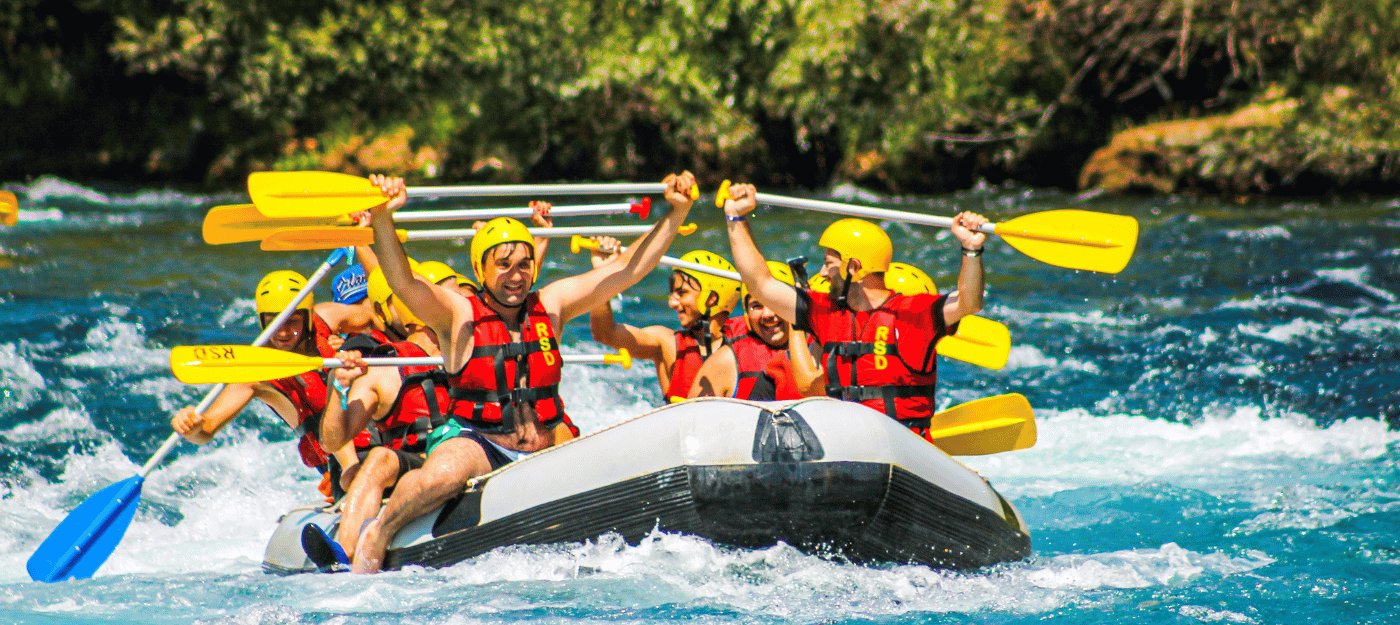
Adrenaline-Pumping Adventure
Whitewater rafting offers an unparalleled adrenaline rush, as rafters confront powerful currents and unpredictable waves. The thrill of successfully maneuvering through roaring rapids creates an electrifying sense of accomplishment, making it a favorite among adventure enthusiasts.
Team Collaboration
Unlike individual water sports like kayaking and canoeing, whitewater rafting requires coordinated efforts from all participants. Team members must synchronize their movements and paddle in unison to steer the raft through tumultuous waters, fostering a strong sense of camaraderie and collaboration.
Nature Immersion
In addition to the heart-pounding excitement, whitewater rafting provides a unique opportunity to immerse oneself in the breathtaking beauty of natural landscapes. As rafters navigate through rugged river canyons and lush wilderness, they are treated to stunning vistas and encounters with diverse flora and fauna, creating an unforgettable connection with the environment.
Varied Difficulty Levels
Whitewater rafting offers a range of difficulty levels, catering to both beginners seeking an introductory experience and seasoned adventurers craving more intense challenges. Rivers are classified based on their level of difficulty, providing options for individuals with varying skill levels and risk preferences.
Professional Guidance
Safety is paramount in whitewater rafting, and reputable outfitters provide expert guides who accompany each expedition. These experienced professionals offer valuable insights into navigating the rapids safely while enhancing the overall enjoyment of the adventure.
With its blend of adrenaline-charged excitement, teamwork dynamics, and awe-inspiring natural surroundings, whitewater rafting stands out as a thrilling water sport that promises unforgettable experiences for enthusiasts seeking adventure on the river.
3.2 Scenic Rafting
Rafting is an exciting activity where you navigate rivers using inflatable rafts. Scenic rafting is all about enjoying the beautiful landscapes and gentle currents. It’s a more laid-back version of rafting compared to the intense whitewater experience. Instead of rushing through rapids, scenic rafting allows you to leisurely float down the river and soak in the stunning scenery.
Why Choose Scenic Rafting?
Here are a few reasons why scenic rafting might be the perfect choice for your next outdoor adventure:
- Enjoying the Scenery: If you’re someone who loves being surrounded by nature and wants to take in breathtaking views, scenic rafting is ideal for you. You can relax and enjoy the natural beauty around you without worrying about challenging rapids.
- Gentle Currents: Imagine gliding through calm waters, feeling the gentle movements of the river beneath you. With scenic rafting, you can experience the soothing rhythm of these mild currents as you pass through valleys and peaceful stretches of water.
A Memorable Experience with Loved Ones
Scenic rafting isn’t just about appreciating nature on your own – it’s also a fantastic way to bond with friends and family. Imagine sharing laughter and joy as you navigate the river together, marveling at the incredible sights along the way. It’s an opportunity to create lasting memories in a truly unique setting.
So if you’re looking for a river adventure that combines relaxation, visual beauty, and connection with loved ones, give scenic rafting a try!
Comparative Analysis: Pros and Cons
When comparing kayaking, canoeing, and rafting, there are several factors to consider in order to determine which water sport is the best fit for you. Let’s take a closer look at the pros and cons of each activity based on various aspects:
Skill Requirements
- Kayaking: Kayaking requires a certain level of skill and technique, especially in white water kayaking where paddlers must navigate through fast-flowing rivers and rapids. However, recreational kayaking and sea/ocean kayaking can be enjoyed by beginners with minimal training.
- Canoeing: Canoeing is generally considered easier to learn compared to kayaking. The basic paddling strokes are straightforward, making it accessible for beginners. However, mastering more advanced techniques for efficient paddling and maneuvering can take time and practice.
- Rafting: Rafting is a team sport that relies on coordinated paddling and communication between participants. While no previous experience is required for scenic rafting, whitewater rafting demands teamwork, physical strength, and the ability to follow instructions from a guide.
Equipment Needed
- Kayaking: Kayaking requires the use of a kayak, a paddle, and personal protective gear such as a life jacket. The type of kayak will depend on the specific activity, with recreational kayaks being more stable and maneuverable while white water kayaks are designed for agility.
- Canoeing: Canoeing involves the use of a canoe, which typically accommodates two or more people. Canoes require single-bladed paddles and also necessitate personal protective gear such as life jackets.
- Rafting: Rafting utilizes inflatable rafts that can accommodate groups of up to 10 people. The equipment includes paddles or oars depending on the type of raft (paddle rafts or motor rafts), as well as safety gear provided by the rafting company.
Accessibility of Locations
- Kayaking: Kayaking can be enjoyed in a variety of environments, including calm lakes, rivers, and coastal areas. This allows for greater accessibility and the opportunity to explore different locations based on personal preference.
- Canoeing: Canoeing is similar to kayaking in terms of accessibility, as it can be done in various bodies of water. However, certain types of canoeing, such as expedition canoeing, may require access to larger bodies of water or more remote locations.
- Rafting: Rafting is typically limited to rivers with varying degrees of difficulty. This means that suitable rafting locations may be more limited compared to kayaking or canoeing. However, there are many popular rafting destinations around the world that offer thrilling experiences.
Overall Experience
- Kayaking: Kayaking provides a more intimate and immersive experience on the water. Whether you’re leisurely paddling on a calm lake or navigating through white water rapids, kayaking allows you to connect with nature and enjoy the serenity or excitement of your surroundings.
- Canoeing: Canoeing offers a similar experience to kayaking in terms of connecting with nature and enjoying the tranquility of the water. The larger size of canoes allows for more storage space, making them suitable for longer expeditions and multi-day trips.
- Rafting: Rafting is a highly exhilarating and social activity that involves working together as a team to navigate challenging rapids. It provides an adrenaline rush and a sense of accomplishment when conquering difficult sections of the river. Scenic rafting offers a more relaxed experience, allowing you to appreciate the beauty of your surroundings at a more leisurely pace.
Each water sport has its own unique pros and cons, catering to different preferences and skill levels. Consider your desired level of challenge, access to suitable locations, and the type of experience you’re seeking when deciding which water sport is the best fit for you.
Choosing the Right Water Sport for You
When it comes to choosing between kayaking, canoeing, or rafting, there are several factors to consider that will help you determine which water sport aligns best with your interests, abilities, and preferences. Here are some key points to keep in mind:
Assess Your Skill Level
Assess your comfort and experience with water activities.
- Kayaking and canoeing can be enjoyed by beginners and experienced enthusiasts alike.
- Rafting often requires teamwork and coordination.
Consider Your Physical Fitness
Consider your physical condition and any specific requirements of each activity.
- Kayaking and canoeing can be leisurely or physically demanding depending on the type of experience you seek.
- Rafting typically demands a higher level of physical exertion, especially in whitewater settings.
Determine Your Adventure Preference
Determine the level of adventure and thrill you seek.
- Kayaking offers diverse experiences such as tranquil lake paddling or adrenaline-pumping whitewater expeditions.
- Canoeing provides a balance between relaxation and exploration.
- Rafting is known for its exhilarating whitewater challenges.
Decide on Solo vs Group Experience
Decide whether you prefer individual pursuits or group activities.
- Kayaking and canoeing are well-suited for solo adventures or small groups.
- Rafting is primarily a team-based endeavor.
By considering these factors, you can make an informed decision that aligns with your preferences and ensures an enjoyable and fulfilling water sports experience.
Getting Started: Essential Tips and Resources
If you’re eager to try your hand at kayaking, canoeing, or rafting, here are some essential tips and resources to help you get started:
Choosing the Right Equipment:
- For kayaking: Invest in a stable recreational kayak for calm waters, a sea kayak for coastal adventures, a whitewater kayak for tackling rapids, or a specialized fishing kayak for angling.
- For canoeing: Opt for an open canoe with enough space for your gear and paddling partner. Consider the length and width of the canoe based on your intended use.
- For rafting: Decide whether you prefer paddle rafts or motor rafts based on your desired level of involvement. Renting equipment from a reputable outfitter is often a good option for beginners.
Essential Gear:
- Personal Flotation Device (PFD): Always wear a properly fitted PFD while on the water. It’s crucial for safety.
- Paddles: Choose paddles suitable for your chosen activity and made of durable materials like fiberglass or carbon fiber.
- Safety Equipment: Carry essential safety items such as a whistle, throw bag, and first aid kit.
Training and Instruction:
- Take lessons from certified instructors to learn proper paddling techniques, safety protocols, and rescue skills.
- Join local paddling clubs or groups to connect with experienced enthusiasts who can provide guidance and support.
Planning Your First Adventure:
- Start with calm waters or gentle rapids that match your skill level.
- Research suitable locations that offer the type of experience you desire. Consider factors such as accessibility, water conditions, and any necessary permits.
Remember, practice makes perfect! Don’t be discouraged if you face challenges initially. With time and experience, you’ll become more comfortable and confident on the water. Enjoy the journey!
“The best way to learn is by doing. Get out on the water and embrace the experience, but always prioritize safety and respect for the environment.”
Taking Your Skills to the Next Level
If you’re looking to improve your skills in kayaking, canoeing, or rafting, there are plenty of opportunities available to help you take your proficiency to the next level. Whether you’re interested in honing your technique, exploring new challenges, or pushing your limits, here are some options to consider:
1. Advanced Training Courses
Participating in advanced training courses specifically designed for your chosen water sport can provide valuable insights and instruction from experienced instructors. These courses often focus on:
- Refining technique
- Enhancing safety skills
- Introducing more challenging environments
2. Expeditions and Guided Trips
Embarking on expeditions or joining guided trips is an excellent way to gain practical experience while exploring new and exciting destinations. These experiences offer the chance to:
- Navigate unfamiliar waters
- Encounter diverse natural landscapes
- Learn from seasoned professionals
3. Competitions and Events
Engaging in competitive events can be a thrilling way to test your skills against others in your chosen water sport. From kayak races to canoe slalom competitions and white water rafting challenges, participating in these events can provide:
- Motivation for skill development
- A sense of achievement
4. Joining Clubs or Associations
Becoming a member of local kayaking, canoeing, or rafting clubs or associations can offer access to a supportive community of fellow enthusiasts. These groups often organize:
- Regular outings
- Workshops
- Social events
where you can network with like-minded individuals and learn from their experiences.
5. Self-Guided Exploration
Taking the initiative to explore new locations on your own can also contribute to skill improvement. By venturing into different environments and adapting to various conditions, you’ll continue to develop your abilities as you:
- Navigate through diverse terrains
- Overcome challenges
Remember that improving your skills is a continuous process that requires dedication, practice, and a willingness to step out of your comfort zone. Embrace opportunities to learn from others, challenge yourself with new experiences, and always prioritize safety while pushing your limits in your chosen water sport.
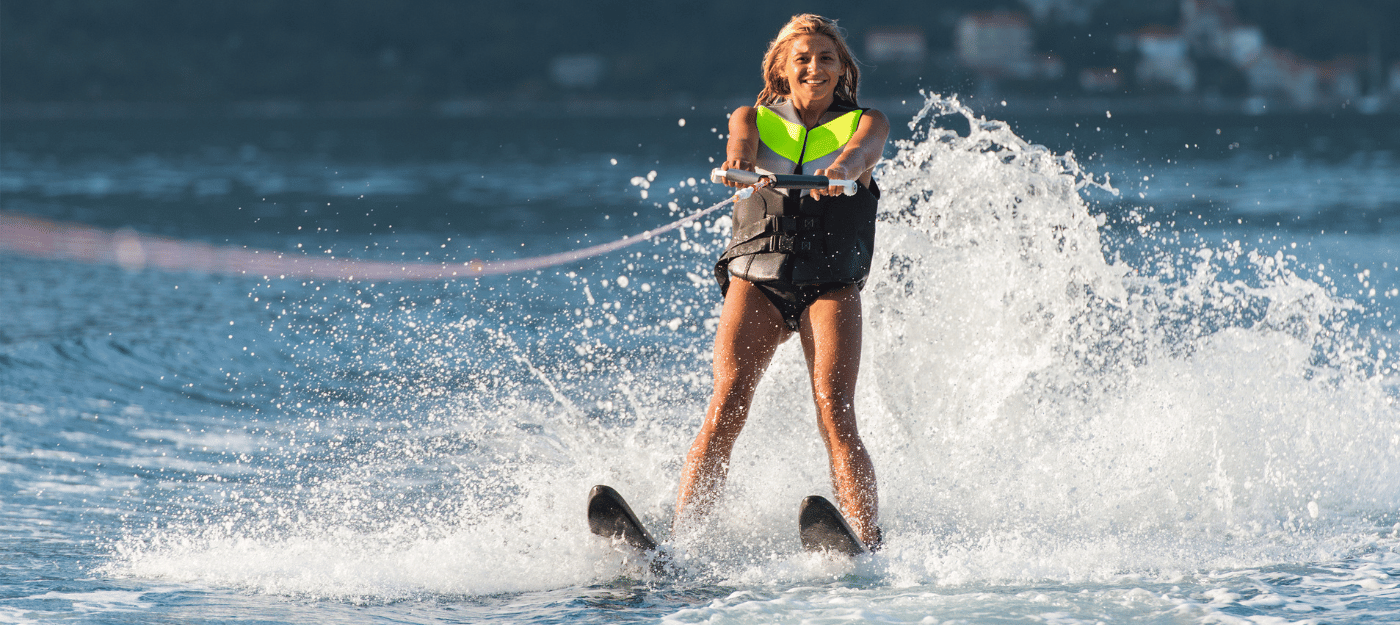
Safety First: Guidelines for a Risk-Free Experience
When it comes to enjoying water sports such as kayaking, canoeing, or rafting, safety should always be a top priority. Here are some important safety measures that all participants should follow to ensure a safe and enjoyable outing on the water:
1. Wear a Life Jacket at All Times
- When participating in water activities like kayaking, canoeing, or rafting, wearing a life jacket is crucial for your safety.
- Make sure the life jacket fits you properly and is fastened securely.
- Keep the life jacket on at all times while you’re on the water.
2. Know the Water Conditions and Weather Forecast
- Before you start your adventure, take some time to research and understand the current water conditions and weather forecast.
- This information will help you make informed decisions about whether it’s safe to go out on the water or if you need to postpone your plans.
3. Check Your Equipment
- Before heading out, inspect your equipment, including kayaks, canoes, and rafts, to ensure they’re in good working condition.
- Look for any signs of damage or wear that could affect their performance or safety.
- If you notice any issues, get them fixed or replace the equipment before using it.
4. Learn Proper Paddling Techniques
- To navigate through different water conditions effectively, it’s important to learn and practice proper paddling techniques.
- Take lessons or seek guidance from experienced paddlers to improve your skills.
- Knowing how to paddle correctly will not only make your experience more enjoyable but also help prevent accidents or injuries.
5. Protect Yourself from Sun Exposure
- Spending time on the water means being exposed to the sun’s rays, which can be harmful to your skin.
- Wear sunscreen with a high SPF and reapply it regularly, especially if you’re in the water.
- Additionally, wear protective clothing such as a hat, sunglasses, and lightweight, long-sleeved shirts to shield yourself from the sun.
6. Share Your Plans
- Before you start your water adventure, let someone reliable know about your intended route and when you expect to return.
- This way, if something goes wrong or you don’t come back on time, they can alert the authorities and provide them with essential information.
7. Be Mindful of Others
- When you’re out on the water, be aware of other watercraft and wildlife in the area.
- Avoid getting too close to them to prevent any potential collisions or disturbances.
- Respect the natural environment and follow any local rules or guidelines that are in place.
8. Carry Essential Safety Gear
- In case of emergencies, it’s crucial to have essential safety gear with you.
- This includes items like a first aid kit, communication devices (such as a whistle or waterproof phone case), and signaling tools (like a flashlight or mirror).
- Keep these items easily accessible in a waterproof bag or container.
By following these safety tips, you can minimize risks and fully enjoy the thrill of kayaking, canoeing, or rafting while ensuring a secure and memorable experience. Remember that swimming safety is essential as well; always adhere to swimming guidelines and be aware of your surroundings in case of any unexpected situations.
Safety should never be compromised when engaging in water sports, as it not only protects you but also contributes to the overall enjoyment of these activities.
Exploring New Horizons: Unique Destinations for Water Sports Enthusiasts
If you love water sports, there are many beautiful places in the world where you can do activities like kayaking, canoeing, and rafting. Whether you want excitement or a peaceful experience, these destinations have something for everyone.
Kayaking Destinations:
Here are some amazing places to go kayaking:
- Milford Sound, New Zealand: This place is known for its stunning natural beauty. You can paddle through calm waters surrounded by tall cliffs, waterfalls, and rainforests.
- Sea of Cortez, Mexico: Explore the “Aquarium of the World” as Jacques Cousteau called it. The Sea of Cortez has clear waters with lots of marine life like dolphins, sea turtles, and colorful coral reefs.
- Norwegian Fjords, Norway: Experience the dramatic landscapes of Norway’s fjords. You can glide through deep blue fjords with mountains and waterfalls all around you.
Canoeing Locations:
If you prefer canoeing, here are some great places to check out:
- Boundary Waters Canoe Area Wilderness, United States: This wilderness area in Minnesota has over 1 million acres of lakes and rivers. You can go on a multi-day canoe trip and enjoy the peace and quiet of nature.
- Algonquin Provincial Park, Canada: Discover the beauty of Ontario’s wilderness in Algonquin Provincial Park. Paddle through calm lakes and rivers while spotting animals like moose, beavers, and loons.
- Allier River, France: Experience the charm of rural France as you paddle along the picturesque Allier River. Enjoy the calmness of this lesser-known destination while passing by cute villages and scenic landscapes.
Rafting Trips:
For those who love rafting, here are some thrilling destinations:
- Colorado River, United States: Go on an exciting adventure through the Grand Canyon on the Colorado River. Experience thrilling rapids and see amazing rock formations along the way.
- Zambezi River, Zambia/Zimbabwe: Get ready for an adrenaline rush on one of Africa’s most famous rivers. The Zambezi River has both exciting rapids and beautiful sights like Victoria Falls.
- Tatshenshini-Alsek River, Canada/Alaska: Immerse yourself in the wilderness of Alaska and British Columbia as you navigate the Tatshenshini-Alsek River. See massive glaciers, breathtaking mountains, and lots of wildlife on this epic rafting trip.
These are just a few examples of the many incredible destinations available for water sports enthusiasts. Remember to research and plan your trips carefully, considering factors such as weather conditions, difficulty levels, and local regulations. Whether you’re seeking adrenaline-pumping rapids or serene paddling experiences, these destinations offer unforgettable adventures for all skill levels.
So pack your gear, choose your destination, and get ready to embark on an unforgettable water sports journey!
The Thrill of the Unknown: Adventure Stories from Experienced Water Sport Adventurers
When it comes to water sports like kayaking, canoeing, and rafting, there’s no shortage of thrilling adventure stories from experienced enthusiasts. These narratives capture the excitement and challenges of embarking on unforgettable journeys in kayaks, canoes, or rafts. Let’s dive into some of the most captivating tales from these adrenaline-seeking adventurers.
1. Kayaking Adventure Stories
Kayaking offers a wide range of opportunities for exploration and adventure. Here are a few anecdotes that showcase the thrill of kayaking:
- Conquering the Mighty Rapids – Imagine navigating through class IV and V rapids, feeling the rush as you maneuver your kayak through swirling currents and powerful waves. Experienced kayakers often share stories of their triumphs over challenging whitewater sections, where precise paddling skills and quick decision-making are essential for survival.
- Encounters with Marine Life – Sea/ocean kayaking provides a unique chance to come face-to-face with fascinating marine creatures. Picture yourself paddling alongside dolphins, sea turtles, or even whales. These encounters create lasting memories and remind us of the incredible wonders that await in the vast blue expanse.
- Exploring Hidden Coves and Caverns – Recreational kayakers often seek out calm waters to immerse themselves in nature’s tranquility. They recount tales of exploring hidden coves, paddling through narrow channels, and discovering secluded beaches that can only be accessed by kayak. These serene adventures offer a peaceful escape from the hustle and bustle of everyday life.
2. Canoeing Expedition Anecdotes
Canoeing is synonymous with epic expeditions and long-distance journeys. Here are a couple of stories that highlight the adventurous aspect of canoeing:
- Navigating Remote Wilderness – Expeditions in canoes take adventurers deep into untouched wilderness areas. These stories often feature tales of paddling across vast lakes, portaging through dense forests, and camping in pristine locations. The challenges faced during these expeditions test the endurance and resilience of the canoeists.
- Cultural Immersion on Remote Rivers – Canoeing allows travelers to access remote rivers that wind through culturally rich regions. Adventurers share stories of interacting with indigenous communities, learning about their traditions, and gaining a deeper understanding of the local way of life. These experiences provide a unique blend of adventure and cultural exploration.
3. Rafting Experiences
Rafting is all about teamwork and the adrenaline rush of tackling challenging rapids. Here are a few thrilling experiences shared by rafting enthusiasts:
- Adventures in Whitewater Paradise – Rafters often recount their encounters with heart-pounding whitewater rapids. They describe the exhilaration of paddling as a team, riding waves, and navigating through narrow canyons. These stories capture the essence of the adrenaline-fueled world of whitewater rafting.
- Scenic Floats with Spectacular Views – Not all rafting experiences are about extreme rapids. Some enthusiasts prefer scenic rafting trips that focus more on enjoying the surrounding landscapes and gentle currents. From floating through breathtaking canyons to witnessing majestic waterfalls, these adventures offer a different kind of thrill.
These adventure stories from experienced water sport adventurers give us a glimpse into the exhilarating world of kayaking, canoeing, and rafting. Each water sport offers its own unique set of challenges and rewards, ensuring that enthusiasts keep coming back for more adrenaline-fueled escapades on the water. So, whether you’re craving the rush of whitewater or seeking tranquil exploration, there’s a water sport waiting to ignite your sense of adventure.
Conclusion
After exploring the world of kayaking, canoeing, and rafting, it’s clear that each water sport offers its own unique experiences and benefits. Choosing the “best” water sport ultimately comes down to personal preferences, interests, and abilities. Rather than searching for the one definitive answer, it’s important to embrace the diversity and try out all three activities if possible.
Here are some final thoughts to consider when deciding which water sport is best for you:
- Skill Level: Assess your comfort level with different types of water conditions and paddling techniques.
- If you enjoy a challenge and thrive in rough waters, white water kayaking or rafting might be the right choice for you.
- If you prefer a more relaxed and leisurely experience, recreational kayaking or canoeing could be a better fit.
- Interests: Think about what aspects of each water sport appeal to you the most.
- Are you drawn to the thrill and adrenaline rush of tackling rapids as a team? Whitewater rafting might be your calling.
- Do you have a passion for fishing and want to combine it with paddling? Kayak fishing could be the perfect combination of both hobbies.
- Accessibility: Consider the availability of suitable locations for each activity near you.
- Are there nearby rivers or lakes where you can easily access for kayaking or canoeing?
- Is there a reputable rafting company that offers guided trips in your area?
- Costs: Take into account the equipment needed for each activity and their associated costs.
- Kayaks tend to be more affordable compared to canoes and rafts, but it’s important to factor in other expenses such as paddles, safety gear, and maintenance.
Remember, the beauty of water sports lies in their diversity and adaptability. You can always start with one activity and transition to another as you gain more experience and confidence on the water. So don’t limit yourself to just one water sport—explore the possibilities and find the one that brings you the most joy and fulfillment.
“The only way to truly understand the magic of these water sports is to experience them firsthand. So, grab a paddle, hop into a kayak, canoe, or raft, and let the water be your guide on an unforgettable adventure.”








